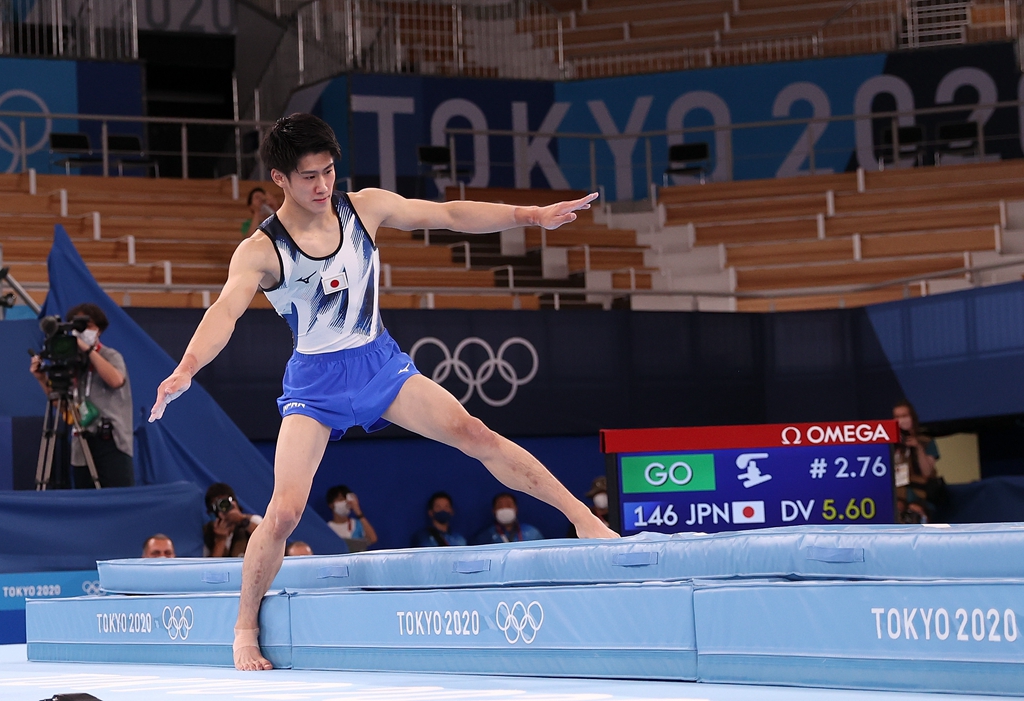Scoring controversies call for more transparency in gymnastics

The latest controversy surrounding gymnastics occured on the sixth day of the Tokyo Olympics when Japanese gymnast Daiki Hashimoto won the gold for men's individual all-around.
By sportswriter Lu Yuchen
"Scoring controversy" is a term that arises almost every four years at Olympic gymnastics on July 31.
The latest controversy surrounding gymnastics occured on the sixth day of the Tokyo Olympics when Japanese gymnast Daiki Hashimoto won the gold for men's individual all-around. China's Xiao Ruoteng, who had been leading the competition in the first five rotations, claimed the silver medal after he got a score of 14.066 in the last rotation.
Many netizens then questioned if Hashimoto deserved a score of 14.7 for his vault routine as pictures and videos showed that he failed to end with a stable landing.
In what was a rare move, the International Gymnastics Federation (FIG) responded to the controversy by publishing a statement one day after their social media account was flooded by accusations of "scoring scandals."
"The FIG assesses that 14.7 points obtained by Hashimoto on this apparatus is correct in regards to the Code of Points, and so is the final ranking," FIG concluded in the statement after analyzing Hashimoto's movements.
But the explanation cannot quash the criticism over the FIG's transparency and fairness.
"Gymnastics is a judgment sport. As a result, the rules for officiating must be transparent, fair and must maintain sport justice for all athletes." These words come from the 162-page General Judges' Rules 2017-2020 (valid until 2021). But it's easier said than done.
Gymnastics, like all judged sports, will have some subjectivity no matter what the rules are.
To understand the controversy over Hashimoto's score, you have to understand how scoring in gymnastics works. A gymnast's score on any apparatus is the combination of an execution score graded out of a perfect 10 and a difficulty or starting value score.
A routine's difficulty score is the sum of all a gymnast's moves in a routine: the higher the difficulty of the move, the more it's worth, and the higher the total value goes.
Official FIG competitions only show the total scores of difficulties and executions, although gymnastics compose more elements. The highest and the lowest sums of total deductions applied in tenths of a point for execution, aesthetic, technical and compositional errors are all eliminated. The average remaining sums are subtracted from the ten points in order to determine the Final "E" score.
But the audience cannot see the whole process. On most occasions, they can hardly see the "D" score and "E" score as the banners flash away at a glimpse.
Moreover, if an athlete doesn't accept his or her score on any apparatus, the athlete can only appeal against difficulty scores, not the execution scores. A superior jury will then review difficulty scores. The president of the men's/women's technical committee or his/her representative will serve as Chair of the Superior Jury.
Whether we admit it or not, juries are human beings who have their own standards. Nobody can say he or she is 100 percent objective.
In today's high-tech era, there should be a more scientific solution for this. Though it doesn't mean that all problems would be solved in an instant, electronic judge systems like VAR play a positive role in protecting fairness in other sports.
Apart from the judging system, it is also difficult for the public to understand the rules clearly. That is what the netizens complain about FIG mostly.
In every four-year cycle, the FIG publishes a new version of the Code of Points. Some of the movements leave, some stay, some get added. The value of all the elements will also be fixed if needed. Even some member associations complain that the whole procedure and standard are not transparent nor fair enough.
Athletes need time to learn certain elements from their coaches. But coaches can't teach all the elements as they wish -- they just do not know how.
That is an obstacle for those associations who have less influence in the Technical Committee. They don't have much influence to make the elements that they are good at to be valued on higher scores.
As a gymnastics insider put it, gymnastics is so subjective even computers can't get it right. But it is an issue that the FIG, the oldest established international federation of an Olympic sport, has to address properly.
One thing is for sure: the more complaints about the fairness of the sport, the harder for it to maintain credibility.